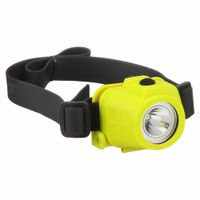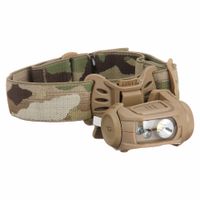Call +(254) 703 030 000 / 751 483 999 / 721 704 777
- Home
- Lighting
- Flashlights
- Headlamps Helmet Lights
.....Read More
Frequently Asked Questions
What are the best headlamps for industrial use?
The best headlamps for industrial use should offer durability, brightness, comfort, and safety features. Here are some top choices:
1. **Petzl DUO S**: Known for its robust construction, the Petzl DUO S offers up to 1100 lumens of brightness. It features multiple lighting modes, including a flood and focused beam, and is waterproof, making it suitable for harsh environments. The headlamp also includes a FACE2FACE anti-glare function, which prevents blinding colleagues.
2. **Black Diamond Icon 700**: This headlamp provides 700 lumens of power and is designed for rugged use. It has a removable battery pack, which can be worn on a belt or stored in a pocket to reduce weight on the head. The Icon 700 is waterproof and dustproof, ideal for industrial settings.
3. **Coast HL8R**: Offering up to 800 lumens, the Coast HL8R is known for its long battery life and adjustable focus. It includes a rechargeable battery pack and can also run on standard AA batteries, providing flexibility in power sources. The headlamp is impact-resistant and weatherproof.
4. **Fenix HP30R**: This model delivers up to 1750 lumens and features a separate battery pack, which can be clipped to a belt or backpack. It has a spotlight and floodlight mode, and the battery pack can also serve as a power bank for other devices. The HP30R is water-resistant and built for tough conditions.
5. **Princeton Tec Apex**: With 650 lumens, the Apex is a reliable choice for industrial use. It offers multiple beam settings and is waterproof. The headlamp is designed to withstand extreme temperatures and is known for its durability.
These headlamps are designed to meet the demands of industrial environments, providing reliable performance and safety.
How do I choose the right headlamp for my needs?
To choose the right headlamp, consider the following factors:
1. **Brightness (Lumens):** Determine the level of brightness you need. For general camping or hiking, 100-200 lumens is sufficient. For more intense activities like night running or caving, consider 300 lumens or more.
2. **Beam Type:** Decide between a flood beam for close-up tasks, a spot beam for long-distance viewing, or a combination for versatility.
3. **Battery Life:** Check the battery life and type. Rechargeable batteries are eco-friendly and cost-effective over time, while disposable batteries are convenient for long trips without charging access.
4. **Weight and Comfort:** Ensure the headlamp is lightweight and has an adjustable, comfortable strap, especially for prolonged use.
5. **Water Resistance:** Look for a headlamp with an IPX rating if you expect exposure to rain or water. IPX4 is splash-resistant, while IPX7 can withstand submersion.
6. **Red Light Mode:** A red light mode is useful for preserving night vision and not disturbing others.
7. **Tilt Functionality:** A tiltable headlamp allows you to adjust the angle of the light, which is useful for different activities.
8. **Durability:** Consider the build quality and materials, especially if you plan to use it in rugged conditions.
9. **Price:** Balance your budget with the features you need. Higher-priced models often offer better performance and durability.
10. **Brand and Reviews:** Research reputable brands and read user reviews to gauge reliability and performance.
By evaluating these factors, you can select a headlamp that best suits your specific needs and activities.
What is the difference between general purpose and tactical headlamps?
General purpose headlamps and tactical headlamps differ primarily in their design, functionality, and intended use.
General purpose headlamps are designed for everyday activities such as camping, hiking, or household tasks. They typically offer a balance of brightness, battery life, and comfort. These headlamps often have multiple light modes, including low, medium, and high settings, and sometimes a red light mode to preserve night vision. They are lightweight, easy to use, and focus on providing sufficient illumination for general tasks without excessive features.
Tactical headlamps, on the other hand, are designed for more demanding and specialized applications, such as military, law enforcement, or search and rescue operations. They are built to be rugged and durable, often featuring water and impact resistance. Tactical headlamps usually offer higher brightness levels and longer beam distances to meet the needs of high-stakes environments. They may include features like strobe modes for signaling, infrared capabilities for night vision compatibility, and secure, adjustable straps for stability during intense activities. Additionally, tactical headlamps often have more robust battery options, including rechargeable batteries, to ensure reliability in critical situations.
In summary, general purpose headlamps are versatile and suitable for everyday use, focusing on comfort and ease of use, while tactical headlamps are specialized for high-performance and durability in challenging conditions.
Are there headlamps that are safe to use in hazardous environments?
Yes, there are headlamps specifically designed for use in hazardous environments. These headlamps are often referred to as intrinsically safe or explosion-proof headlamps. They are engineered to prevent the ignition of flammable gases, vapors, or dust that may be present in such environments, making them suitable for industries like mining, oil and gas, chemical plants, and other areas where explosive atmospheres may occur.
Intrinsically safe headlamps are certified according to various international safety standards, such as ATEX (Atmosphères Explosibles) in Europe, IECEx (International Electrotechnical Commission System for Certification to Standards Relating to Equipment for Use in Explosive Atmospheres), and UL (Underwriters Laboratories) in the United States. These certifications ensure that the headlamps meet stringent safety requirements and are safe to use in specific hazardous zones.
Key features of intrinsically safe headlamps include:
1. **Non-sparking materials**: They are constructed from materials that do not produce sparks, which could ignite flammable substances.
2. **Sealed battery compartments**: The design prevents any potential sparks from the battery from escaping into the environment.
3. **Low energy circuits**: The electrical circuits are designed to operate at energy levels that are too low to cause ignition.
4. **Durability**: They are often rugged and resistant to impact, water, and dust, ensuring reliability in harsh conditions.
5. **Adjustable lighting**: Many models offer adjustable brightness levels and beam patterns to suit different tasks and environments.
When selecting a headlamp for hazardous environments, it is crucial to verify its certification and ensure it is appropriate for the specific type of hazardous area in which it will be used. This ensures compliance with safety regulations and helps protect workers from potential risks.
How long do headlamp batteries typically last?
The lifespan of headlamp batteries can vary significantly based on several factors, including the type of battery, the headlamp's power settings, and usage patterns. Typically, headlamps use either disposable alkaline batteries, rechargeable NiMH batteries, or lithium-ion batteries.
1. **Alkaline Batteries**: These are common in many headlamps and generally provide a runtime of about 5 to 20 hours on a medium setting. However, their performance can diminish in cold temperatures, and they are less efficient than other types.
2. **Rechargeable NiMH Batteries**: These batteries are more environmentally friendly and can be recharged hundreds of times. They usually offer a similar runtime to alkaline batteries but maintain better performance in cold conditions. On a medium setting, they can last between 5 to 15 hours per charge.
3. **Lithium-ion Batteries**: These are often used in high-performance headlamps and provide longer runtimes, typically ranging from 10 to 50 hours depending on the brightness setting. They perform well in cold weather and have a longer lifespan in terms of recharge cycles compared to NiMH batteries.
The headlamp's brightness setting also plays a crucial role in battery life. Lower settings can significantly extend battery life, while higher settings will drain the battery faster. For instance, a headlamp on its highest setting might last only 2 to 4 hours, whereas on a low setting, it could last up to 100 hours or more.
In summary, the typical lifespan of headlamp batteries can range from a few hours to several days, depending on the battery type and usage. Regularly checking and maintaining your headlamp and batteries can help ensure optimal performance and longevity.
Can headlamps be used in wet or rainy conditions?
Yes, headlamps can be used in wet or rainy conditions. Most modern headlamps are designed to be water-resistant or waterproof, making them suitable for use in various weather conditions, including rain. They typically have an IP (Ingress Protection) rating that indicates their level of protection against water and dust. For example, an IPX4 rating means the headlamp is resistant to water splashes from any direction, while an IPX7 rating indicates it can be submerged in water up to a certain depth for a limited time.
When using headlamps in wet conditions, it's important to ensure that the battery compartment and any charging ports are securely closed to prevent water ingress. Additionally, the headlamp's strap and housing should be checked for any signs of wear or damage that could compromise its water resistance.
In rainy conditions, headlamps can provide essential visibility and safety, especially for outdoor activities like hiking, running, or cycling. They help illuminate the path ahead and make the wearer more visible to others. Some headlamps also offer adjustable brightness settings and beam patterns, allowing users to optimize visibility according to the specific conditions.
However, it's crucial to note that while headlamps are generally effective in rain, heavy downpours or fog can still reduce visibility. In such cases, using a headlamp with a higher lumen output or a focused beam can help improve visibility. Additionally, wearing a hat or visor can help shield the eyes from rain and reduce glare from the headlamp.
Overall, headlamps are versatile tools that can be effectively used in wet or rainy conditions, provided they are designed with appropriate water resistance and are used with care.
What are the most important features to look for in a headlamp?
When selecting a headlamp, consider the following key features:
1. **Brightness (Lumens):** The brightness of a headlamp is measured in lumens. Higher lumens mean a brighter light, which is crucial for activities in low-light conditions. Choose a headlamp with adjustable brightness settings to conserve battery life.
2. **Beam Distance and Type:** Consider the beam distance, which indicates how far the light can reach. A headlamp with both a focused spot beam for distance and a flood beam for proximity tasks offers versatility.
3. **Battery Life and Type:** Long battery life is essential for extended use. Look for headlamps with rechargeable batteries or those compatible with both rechargeable and disposable batteries for convenience.
4. **Weight and Comfort:** A lightweight headlamp with an adjustable, comfortable strap is ideal for prolonged wear. Ensure it fits securely without causing discomfort.
5. **Water Resistance:** Check the IPX rating for water resistance, especially if you plan to use the headlamp in wet conditions. An IPX4 rating or higher is recommended for water resistance.
6. **Durability:** A robust, impact-resistant design ensures the headlamp can withstand rough handling and harsh environments.
7. **Red Light Mode:** A red light mode is useful for preserving night vision and minimizing disturbance to others, making it ideal for camping or stargazing.
8. **Tilt Functionality:** A tiltable headlamp allows you to adjust the angle of the light, providing flexibility for different tasks.
9. **Lock Function:** A lock function prevents the headlamp from accidentally turning on in your bag, conserving battery life.
10. **Price and Brand Reputation:** Consider your budget and choose a reputable brand known for quality and reliability to ensure a good balance between cost and performance.



